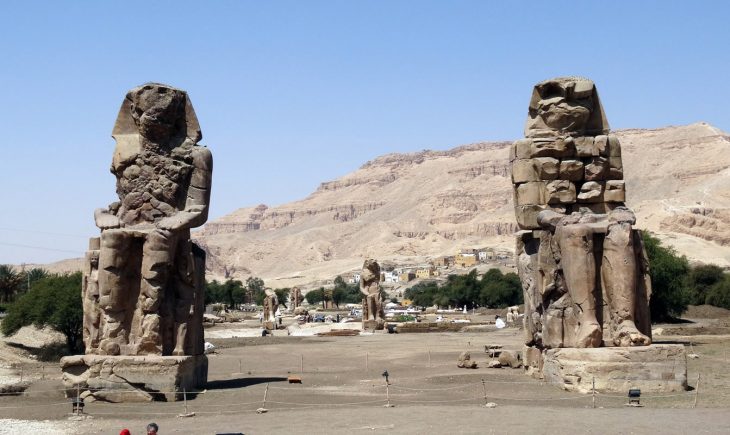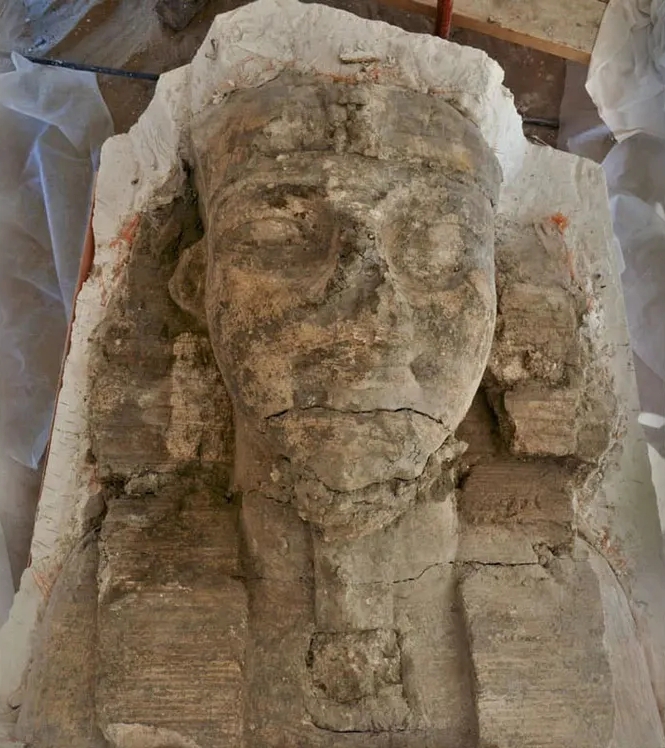Archaeologists have recently unearthed a remarkable discovery at the funerary temple of King Amenhotep III in western Luxor, Egypt—a pair of colossal sphinx statues, each an impressive 26 feet in length. This momentous find, detailed in a statement from the Egyptian Ministry of Tourism and Antiquities, sheds new light on the ancient grandeur and artistic prowess of the pharaonic era.
Led by archaeologist Hourig Sourouzian, a dedicated team of German and Egyptian researchers made the astonishing find within the sprawling ruins of Luxor, encompassing the renowned ancient city of Thebes. Nestled within the “Temple of Millions of Years,” the sphinxes were discovered partially submerged in water, adding to the mystique and allure of the monumental structure.

The ongoing efforts to restore the temple and the iconic Colossi of Memnon, colossal stone statues depicting Amenhotep III at the complex entrance, have been integral to uncovering this monumental find. The sphinxes, intricately carved to depict Amenhotep III adorned with a mongoose headdress, regal beard, and ornate necklace, serve as poignant representations of the revered pharaoh.
During the meticulous cleaning and restoration process, the research team stumbled upon a significant inscription affirming the statues’ royal significance. The inscription, reading “the beloved of the god Amun-Ra,” bears the royal name of Amenhotep III, further solidifying the statues’ connection to the pharaoh.
The excavation also yielded other treasures, including three remarkably preserved sculptures of the goddess Sekhmet, symbolizing the ferocious lion-like guardian of the Sun god Ra. Additionally, remnants of a grand pillared hall adorned with depictions of the royal jubilee, known as heb-sed, were uncovered. This ancient Egyptian festival symbolized the renewal of the king’s divine right to rule and is vividly depicted on the sandstone walls of the temple.
Dr. Hourig Sourouzian, head of the mission, emphasized the historical significance of this discovery, highlighting the confirmation of the procession road’s beginnings between the temple’s third edifice and the columned courtyard. This road played a pivotal role in hosting annual celebrations, including the Beautiful Valley Festival and the Valentine’s Day-dam festivities during the final decade of Amenhotep III’s reign.
Amenhotep III, reigning from 1390–1353 B.C.E. during the illustrious 18th Dynasty, was among the rare pharaohs who celebrated their heb-sed festival. Scholars regard his celebration as one of the most elaborate and splendid in ancient Egyptian history, underscoring the opulence and cultural vibrancy of the era.
The discovery of the colossal sphinxes and the richly adorned temple complex not only enriches our understanding of ancient Egyptian art and architecture but also offers a glimpse into the grandeur and ceremonial splendor of Amenhotep III’s reign, immortalized in stone for generations to come.
